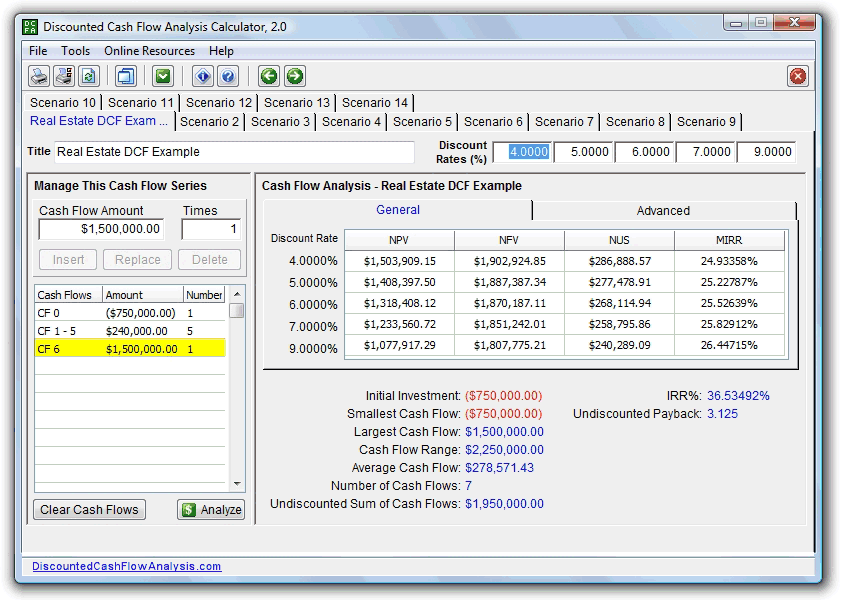Discounted Cash Flow (DCF) Calculator and Analysis
Post on: 17 Июль, 2015 No Comment

Before reading this lesson, you should have previously read through.
Discounted cash flow is regularly used by analysts to work out a company’s fair value. Working it out is highly complex, but many brokers offer customers a free DCF calculator.
Discounted cash flow (DCF) is a widely used way of estimating a company’s fair value by forecasting how much cash it will generate in the future – usually over five to ten years – and then subtracting, or discounting from this its average cost of capital over that period.
Make use of a free discounted cash flow calculator
If the estimated market capitalisation, according to future growth prospects, is lower than the company’s current market capitalisation, you could conclude that the company’s shares are overpriced at their current level and so decide to sell them
Many brokers, however, offer a free discounted cash flow calculator that you can use to come up with a ball-park estimate.
The calculator will give you an estimate of what the company’s market capitalisation would be if it were valued according to its future growth prospects and its cost of capital.
If this figure is lower than the company’s current market capitalisation, you could conclude that the company’s shares are overpriced at their current level and so decide to sell them.
If the figure is higher than the company’s current market capitalisation, you could conclude that its shares are underpriced and therefore decide to buy them.
Apply with caution
Nearly every variable in the calculation is based on estimates and forecasts, so be cautious when applying discounted cash flows in practice.
The discounted cash flow method is widely used by analysts when they make buy/sell recommendations for shares. It is not however without its flaws.
Most importantly, nearly every variable in the calculation is based on estimates and forecasts – of everything from future tax rates to how much alternative investments like government bonds might perform over the same period.
If the person making the calculation makes just one wrong estimate this can skew the final figure.
The discounted cash flow should therefore only be used with caution and in combination with other valuation models.
Summary
So far you have learned that.
- . discounted cash flow (DCF) is a widely used way of estimating a company’s fair value by forecasting how much cash it will generate in the future.
- . the equation for the discounted cash flow is very long and complicated and goes beyond the scope of this lesson. Many brokers, however, offer a free discounted cash flow calculator that you can use to come up with a ball-park estimate.
- . if the estimated market capitalisation, according to future growth prospects, is lower than the company’s current market capitalisation, you could conclude that the company’s shares are overpriced at their current level and so decide to sell them.
- . use with caution, because nearly every variable in the calculation is based on estimates and forecasts.














